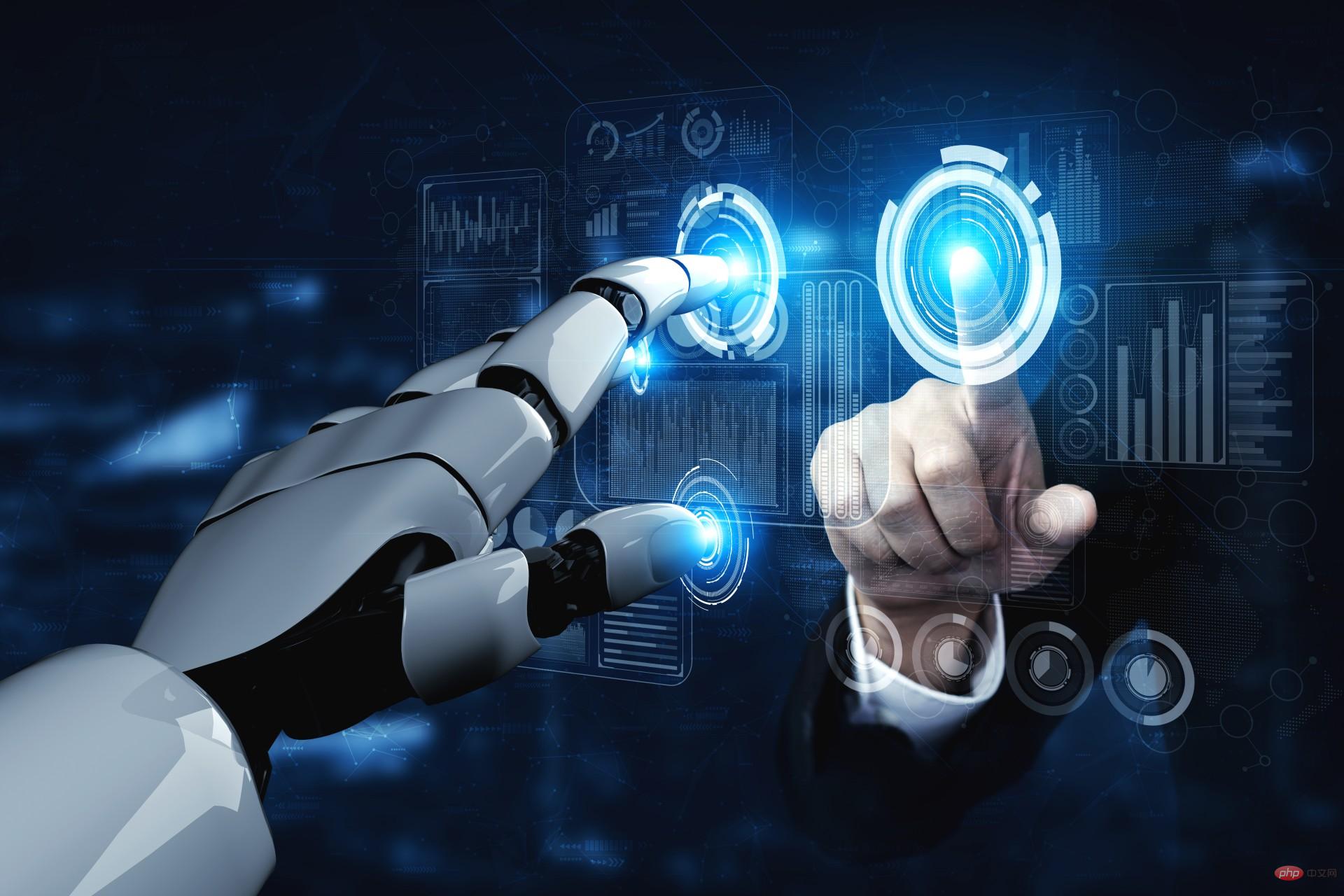
2022 saw many groundbreaking breakthroughs in the field of AI/ML. Big tech companies like Google, Meta, and Microsoft are making major strides in new innovations from quantum computing to generative artificial intelligence.
For example, some of the biggest breakthroughs include Meta’s HyperTreeProofSearch (HTPS) for solving International Mathematical Olympiad problems; DeepMind’s Alpha Fold and Meta AI’s ESMFold for protein folding prediction; Google’s DeepNull to simulate the correlation between phenotypes The relationship between variable effects and improving genome-wide association studies (GWAS), etc.
Next, let’s look at some predictions for 2023.
ChatGPT is popular on the Internet with its excellent conversation capabilities. It is built on OpenAI’s GPT-3, which has 176 billion parameters and relies on larger model sizes. Although there are other LLMs with two, three or even ten times the parameters of GPT-3, some models of DeepMind or Meta (also known as small language models (SLM)) have more parameters than GPT-3 in logical reasoning. and prediction on multiple tasks.
In addition to reducing the size of the model, it is expected that a larger model, such as GPT-4, will have approximately 100 trillion parameters. Since the largest model currently is the Google Switch Transformer model with 1.6 trillion parameters, the jump will be huge.
However, to achieve greater latency and predictability, the next few years could see existing models being fine-tuned to serve specific purposes. Recently, OpenAI fine-tuned GPT-3 using the DaVinci update.
Trend 1: Generative AI requires explainable AI
Text-to-image generation is the trend that will break the charts in 2022. Models like DALL-E, Stable Diffusion, and Midjourney top the list among enthusiasts who want to experiment with AI-generated art. Conversations quickly moved from text to images to text to video to text to anything, and multiple models were created that could also generate 3D models.
As language models expand and propagation models improve, the text-to-anything trend is expected to rise even higher. Publicly available datasets make generative AI models more scalable.
These datasets introduce a section on explainable artificial intelligence, where the properties of each image used to train these generative models become critical.
Trend 2: The FastSaaS race begins
Companies that have caught up with the trend of generating artificial intelligence have begun to provide it as a cloud service. As LLM and generative models such as GPT-3 and DALL-E became publicly available, it became increasingly easier for enterprises to offer them as a service, which gave rise to FastSaaS.
Recently, Shutterstock plans to integrate DALL-E 2 into its platform, Microsoft VS Code added Copilot as an extension, TikTok announced an in-app text-to-image AI generator, and Canva launched AI-on-its-platform Generate function.
Trend Three: Reliance on Supercomputers
This is the trend of building supercomputers to rely on generating tasks and providing services to companies. With these ever-increasing data sets and generative models, the demand for supercomputers is rising and is expected to rise further. With the competition for FastSaaS, the need for better and high-performance computing is the next thing.
NVIDIA and Microsoft recently collaborated to create Quantum-2, a cloud-native supercomputing platform. In October, Tesla announced that its Dojo supercomputer was built entirely from scratch using chips developed by Tesla. Soon, it looks like it could provide access to enterprise customers. Additionally, Cerebras launched Andromeda, a 13.5 million-core AI supercomputer that delivers over 1 exaflop of AI computing power. Recently, Jasper partnered with Cerebras to achieve better performance.
Trend Four: Beyond 3nm Chips
As predicted by Moore’s Law, processing power increases as chip size decreases. So for supercomputers to run large models, they need smaller chips, and we're already seeing chips getting smaller.
In recent years, the chip industry has been pushing for miniaturization, with manufacturers constantly looking for ways to make chips smaller and more compact. For example, for the M2 chip and A16, Apple uses 5nm and 4nm chips respectively. It is expected that TSMC will develop 3nm chips in 2023, which will improve the efficiency and performance of AI/ML algorithm development.
Trend Five: Integration of Quantum and Traditional Computing
As companies such as NVIDIA, Google, and Microsoft provide hardware services to the cloud, more innovations in the field of quantum computing are bound to occur. This will allow small tech companies to train, test and build AI/ML models without the need for heavy hardware.
The rise of quantum computing in the coming years should definitely be taken into account by developers as its use will increase in many other areas such as healthcare, financial services, etc.
In a recent announcement, a quantum computer was connected to Europe's fastest supercomputer to combine classical and quantum computers to solve problems faster. Similarly, Nvidia has also released QODA - Quantum-Optimised Device Architecture for short, which is the first platform for hybrid quantum classical computers.
IBM recently announced their quantum hardware and software at its annual Quantum Summit 2022, outlining a groundbreaking vision for quantum-centric supercomputing using a 433-qubit (qubit) processor. At the Global Artificial Intelligence Summit, IBM announced that next year they will demonstrate a 1,000-qubit system that will become a disruptor for further innovation in various fields.
The above is the detailed content of TOP5 Artificial Intelligence Development Trends in 2023. For more information, please follow other related articles on the PHP Chinese website!
 2023年机器学习的十大概念和技术Apr 04, 2023 pm 12:30 PM
2023年机器学习的十大概念和技术Apr 04, 2023 pm 12:30 PM机器学习是一个不断发展的学科,一直在创造新的想法和技术。本文罗列了2023年机器学习的十大概念和技术。 本文罗列了2023年机器学习的十大概念和技术。2023年机器学习的十大概念和技术是一个教计算机从数据中学习的过程,无需明确的编程。机器学习是一个不断发展的学科,一直在创造新的想法和技术。为了保持领先,数据科学家应该关注其中一些网站,以跟上最新的发展。这将有助于了解机器学习中的技术如何在实践中使用,并为自己的业务或工作领域中的可能应用提供想法。2023年机器学习的十大概念和技术:1. 深度神经网
 人工智能自动获取知识和技能,实现自我完善的过程是什么Aug 24, 2022 am 11:57 AM
人工智能自动获取知识和技能,实现自我完善的过程是什么Aug 24, 2022 am 11:57 AM实现自我完善的过程是“机器学习”。机器学习是人工智能核心,是使计算机具有智能的根本途径;它使计算机能模拟人的学习行为,自动地通过学习来获取知识和技能,不断改善性能,实现自我完善。机器学习主要研究三方面问题:1、学习机理,人类获取知识、技能和抽象概念的天赋能力;2、学习方法,对生物学习机理进行简化的基础上,用计算的方法进行再现;3、学习系统,能够在一定程度上实现机器学习的系统。
 超参数优化比较之网格搜索、随机搜索和贝叶斯优化Apr 04, 2023 pm 12:05 PM
超参数优化比较之网格搜索、随机搜索和贝叶斯优化Apr 04, 2023 pm 12:05 PM本文将详细介绍用来提高机器学习效果的最常见的超参数优化方法。 译者 | 朱先忠审校 | 孙淑娟简介通常,在尝试改进机器学习模型时,人们首先想到的解决方案是添加更多的训练数据。额外的数据通常是有帮助(在某些情况下除外)的,但生成高质量的数据可能非常昂贵。通过使用现有数据获得最佳模型性能,超参数优化可以节省我们的时间和资源。顾名思义,超参数优化是为机器学习模型确定最佳超参数组合以满足优化函数(即,给定研究中的数据集,最大化模型的性能)的过程。换句话说,每个模型都会提供多个有关选项的调整“按钮
 得益于OpenAI技术,微软必应的搜索流量超过谷歌Mar 31, 2023 pm 10:38 PM
得益于OpenAI技术,微软必应的搜索流量超过谷歌Mar 31, 2023 pm 10:38 PM截至3月20日的数据显示,自微软2月7日推出其人工智能版本以来,必应搜索引擎的页面访问量增加了15.8%,而Alphabet旗下的谷歌搜索引擎则下降了近1%。 3月23日消息,外媒报道称,分析公司Similarweb的数据显示,在整合了OpenAI的技术后,微软旗下的必应在页面访问量方面实现了更多的增长。截至3月20日的数据显示,自微软2月7日推出其人工智能版本以来,必应搜索引擎的页面访问量增加了15.8%,而Alphabet旗下的谷歌搜索引擎则下降了近1%。这些数据是微软在与谷歌争夺生
 荣耀的人工智能助手叫什么名字Sep 06, 2022 pm 03:31 PM
荣耀的人工智能助手叫什么名字Sep 06, 2022 pm 03:31 PM荣耀的人工智能助手叫“YOYO”,也即悠悠;YOYO除了能够实现语音操控等基本功能之外,还拥有智慧视觉、智慧识屏、情景智能、智慧搜索等功能,可以在系统设置页面中的智慧助手里进行相关的设置。
 人工智能在教育领域的应用主要有哪些Dec 14, 2020 pm 05:08 PM
人工智能在教育领域的应用主要有哪些Dec 14, 2020 pm 05:08 PM人工智能在教育领域的应用主要有个性化学习、虚拟导师、教育机器人和场景式教育。人工智能在教育领域的应用目前还处于早期探索阶段,但是潜力却是巨大的。
 30行Python代码就可以调用ChatGPT API总结论文的主要内容Apr 04, 2023 pm 12:05 PM
30行Python代码就可以调用ChatGPT API总结论文的主要内容Apr 04, 2023 pm 12:05 PM阅读论文可以说是我们的日常工作之一,论文的数量太多,我们如何快速阅读归纳呢?自从ChatGPT出现以后,有很多阅读论文的服务可以使用。其实使用ChatGPT API非常简单,我们只用30行python代码就可以在本地搭建一个自己的应用。 阅读论文可以说是我们的日常工作之一,论文的数量太多,我们如何快速阅读归纳呢?自从ChatGPT出现以后,有很多阅读论文的服务可以使用。其实使用ChatGPT API非常简单,我们只用30行python代码就可以在本地搭建一个自己的应用。使用 Python 和 C
 人工智能在生活中的应用有哪些Jul 20, 2022 pm 04:47 PM
人工智能在生活中的应用有哪些Jul 20, 2022 pm 04:47 PM人工智能在生活中的应用有:1、虚拟个人助理,使用者可通过声控、文字输入的方式,来完成一些日常生活的小事;2、语音评测,利用云计算技术,将自动口语评测服务放在云端,并开放API接口供客户远程使用;3、无人汽车,主要依靠车内的以计算机系统为主的智能驾驶仪来实现无人驾驶的目标;4、天气预测,通过手机GPRS系统,定位到用户所处的位置,在利用算法,对覆盖全国的雷达图进行数据分析并预测。


Hot AI Tools

Undresser.AI Undress
AI-powered app for creating realistic nude photos

AI Clothes Remover
Online AI tool for removing clothes from photos.

Undress AI Tool
Undress images for free

Clothoff.io
AI clothes remover

AI Hentai Generator
Generate AI Hentai for free.

Hot Article

Hot Tools

Dreamweaver Mac version
Visual web development tools

MantisBT
Mantis is an easy-to-deploy web-based defect tracking tool designed to aid in product defect tracking. It requires PHP, MySQL and a web server. Check out our demo and hosting services.

Notepad++7.3.1
Easy-to-use and free code editor

SAP NetWeaver Server Adapter for Eclipse
Integrate Eclipse with SAP NetWeaver application server.

SublimeText3 Mac version
God-level code editing software (SublimeText3)







